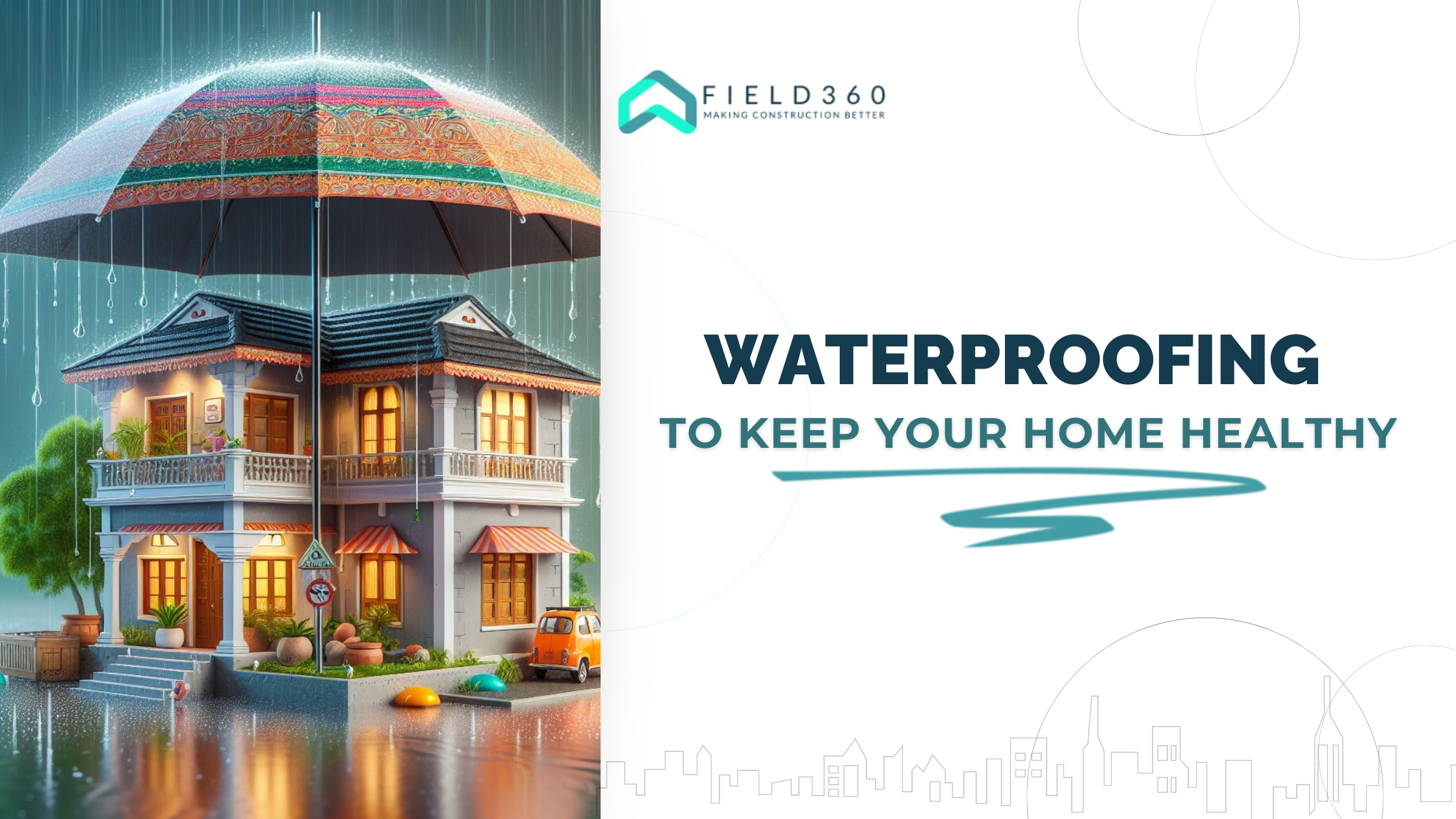Imagine the dream of your ‘home-sweet-home’ being shattered by a damp basement, peeling paint, or even worse, the dreaded black mold. Home waterproofing can be your savior from this nightmare. The importance of waterproofing in construction can only be understood by the houses which have lost their luster, and appear shabby in no time – all because the owners failed to have the home waterproofing done right!
To keep your home forever young and provide long-term durability and protection to the building, it is crucial to get it waterproofed. In this blog, we have included house waterproofing steps to protect your building from rainfall. We have also mentioned the importance of waterproofing for house owners.
What is Home Waterproofing?
As the name suggests, home waterproofing is the process of incorporating waterproofing chemicals in the building to prevent the water from seeping into the walls, floors, etc. It protects the wall against water damage from outside elements, such as rainfall, and from inside elements, such as plumbing leaks or floods in a basement or garage.
The foundation home waterproofing is essential to create a barrier between the foundation and soil. This majorly protects the structure against core damage, mold growth, and leaks. To channel water away from the foundation and building, owners are always advised to get drainage systems waterproofed.
Home Waterproofing Cost
Home waterproofing costs can vary greatly depending on several factors:
- Area
- Size
- The severity of the problem
- Accessibility
- Materials
- Method of Use
Importance of Waterproofing in Construction
| Benefit | Description |
| Structural protection | Prevents water damage to foundations, walls, and roofs, leading to costly repairs and potential structural issues. |
| Moisture control | Prevents moisture build-up and condensation, leading to mold growth, mildew, and wood rot. |
| Leak prevention | Keeps water out of basements, crawl spaces, and other areas, preventing leaks and water damage to belongings. |
| Energy efficiency | Reduces energy use by preventing drafts and air leaks associated with moisture problems. |
| Increased value | Makes your home more attractive to potential buyers by demonstrating good maintenance and preventing future problems. |
| Peace of mind | Knowing your home is protected from water damage provides peace of mind and reduces worry about potential problems. |
What are the House Waterproofing Steps?
The house waterproofing steps can be divided into four crucial phases.
Assessment
The first phase is to find the root cause of the problem. Owners can easily identify problematic areas by inspection or take professional help for complex issues. Start with inspecting the foundation, walls, roof, etc. for leaks, cracks, and moisture damage. Focus on areas prone to water infiltration (e.g., basement, roof valleys).
Preparation
The second phase is marked by a lot of steps to prepare the wall/area for home waterproofing. The series of actions are written below:
- Remove dirt, debris, and existing paint/coatings. Ensure a clean and sound base for waterproofing chemicals.
- Address and repair cracks/leaks in foundations, walls, or roofs. This will Prevent water from bypassing the waterproofing layer.
- Cover furniture, belongings, and plants.
Home Waterproofing
Based on area, severity, and budget (e.g., liquid membrane, sheet membrane, caulk & sealant), select the appropriate waterproofing chemicals. Dr fixit waterproofing, Asian Paints waterproofing for roofs, and Asian Paints waterproofing for water tanks are some of the known waterproofing chemicals. The steps involved in this phase are:
- Select the waterproofing chemical.
- Apply the material following the manufacturer’s instructions.
- Wait for complete drying before proceeding.
And hey, if you’re fixing up your place, don’t overlook the foundation of your structure. Learn How to Choose the Best Cement for Roof to ensure long-term durability and integrity.
Finishing & Maintenance
As an owner, it is very important to check for leaks, cracks, or damage as early detection prevents further damage. Fix leaks or damage as soon as possible. Ensure good airflow in basements, crawl spaces, etc. to reduce moisture build-up and mold growth.
Conclusion
You don’t want to be stuck in a loop of finding the right tools, materials, and manuals for your construction project. It’s always best to get expert advice & manage your home waterproofing project with ease using Field360. The Field360 construction project management app is your ultimate buddy that does all the hard work for you. You can communicate and be connected with the progress with just a tap.
Frequently Asked Questions
You can install a waterproof inner membrane for interior walls and floors. It is made up of rubber or plastic and prevents water seeping.
Naturally occurring water-resistant materials like beeswax and lanolin are used to protect all kinds of fabrics like cotton jackets, leather shoes, canvas bags, tents, and more.
Silicone sealant, an adhesive liquid, is the best waterproofing material.












